It was a quiet day in early March, but the Jewelry Studio of Wellfleet was buzzing with activity. Seven members of Girl Scout Troop 82548 were inside, soldering, hammering, and earning their junior jeweler badges, their work guided by jeweler Jesse Mia Horowitz, who owns the shop with her sister, Neile.
On the workbenches, silver friendship rings were taking shape. They’re an apt symbol for this group, said Troop Leader Sue Sherlock. “Growing up on the Outer Cape, kids develop friendship circles they take through their entire lives,” she said. Sherlock, who lives in Eastham, said her troop members are all fourth-graders at Eastham Elementary School, and many have known one another since they attended Wellfleet Montessori Preschool together.
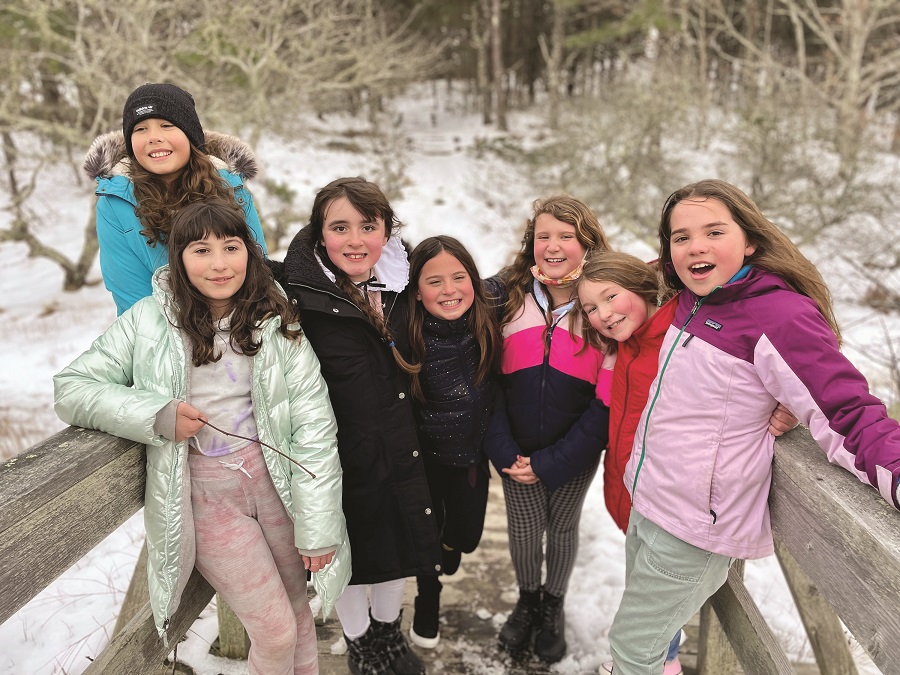
Learning a new skill in order to earn a badge is central to the Girl Scout experience. The girls chose this project themselves and hoped they’d be able to talk their way into Horowitz’s studio — after all, she is the mother of troop member Evie Rose Tomaney.
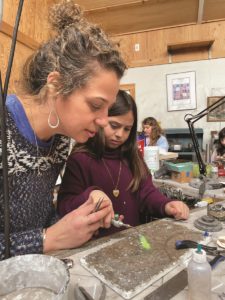
But Horowitz doesn’t let just anyone set up at her workbenches, she said, where valuable breakables and potentially dangerous tools are arrayed. After some thought, she decided the girls, most having turned 10, were old enough to start learning the craft.
The rings the girls made of sterling silver are called “hammer rings” because they are shaped with a hammer. They’re sometimes called stacking rings because several of these slim, simple designs can be worn at once.
“Making one is not as simple as it looks, and there are many steps to the process,” Horowitz said. “But the girls didn’t get distracted, and they had the strength and coordination needed for the task.”
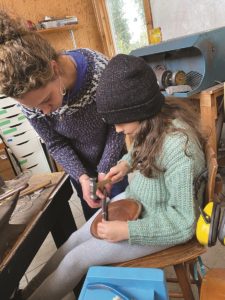
The girls used a jeweler’s ring sizer, trying out different sizes to find the right fit for each ring. From there, they used metal clippers to cut precise lengths of round silver wire. Using a file, they flattened the ends of the wire. Then, using fingers and pliers, they firmly bent the wire to make the ends meet.
“At this point, the ring doesn’t have to be round — the ends just need to be touching perfectly,” Horowitz said. This allows them to be soldered together smoothly.
She then took the girls through the process of soldering. While a household butane torch could work for this project, she said, jewelry workshops typically use air torches filled with acetylene gas, which burns at a higher temperature, to melt the metal quickly. Horowitz steadied the girls’ hands while they were holding the torch.
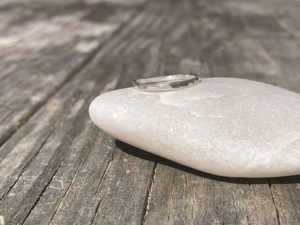
“Soldering was the best part of the project,” said Abigail Kilmer, “because that’s when you can really see the ring come together.”
After the soldering, the girls put their rings in “pickle juice,” an acidic sodium bisulfate liquid jewelers use to dissolve the firescale — a deposit that emerges on sterling silver when it is heated by the torch. Excess solder was then cleaned off with a file.
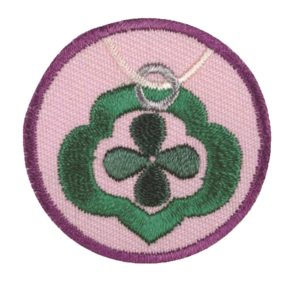
Finally, the girls slid their rings onto mandrels, cylindrical tools with grooves marking ring sizes. Each girl shaped her ring into a perfect circle using a hammer and leather cushion. The indentations made by the hammer stayed visible, giving their rings a sparkly texture.
Wearing their new rings, the girls took a walk over Uncle Tim’s Bridge, just across Commercial Street from Horowitz’s studio. “It was really fun learning something new,” said troop member Zoe Zacharias. “Especially because you think jewelry making would be simple, but it takes a lot of hard work. And talent, and time.”



